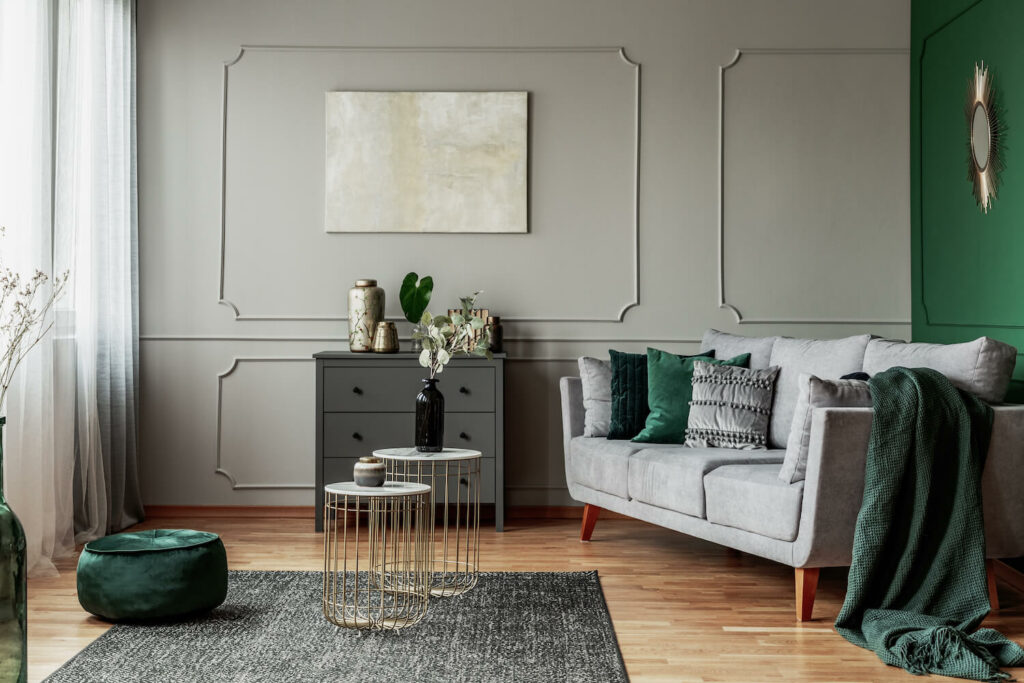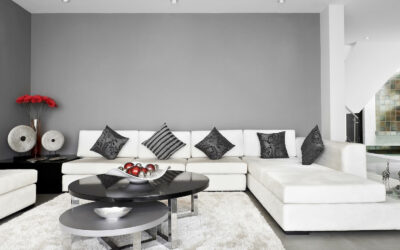
When it comes to transforming the look and feel of your home, few things are as effective as a fresh coat of paint. However, achieving professional-quality results requires more than just a can of paint and a brush. To help you navigate the world of interior painting and achieve outstanding results, we have consulted with an experienced interior painting contractor.
In this article, we will share insider project tips and expert advice to guide you through the process of interior home painting and ensure a successful and visually stunning outcome.
Preparation is Key
One of the most critical aspects of a successful interior painting project is proper preparation. Before picking up a brush, take the time to prepare the surfaces you will be painting. This includes cleaning the walls, patching any holes or imperfections, and sanding rough areas. Properly prepping the surfaces will ensure better paint adhesion, smoother finishes, and a longer-lasting result.
Choose the Right Tools and Materials
Investing in high-quality tools and materials is a worthwhile endeavor when it comes to interior painting. Quality brushes, rollers, and paint trays can make a significant difference in achieving smooth and even coverage. Consider the type of paint you will be using, whether it’s latex or oil-based, and select the appropriate tools accordingly. Additionally, opt for premium paints that offer better coverage and durability for a more professional finish.
Test Colors and Finishes
Before committing to a particular color or finish, it’s essential to test them in your space. Lighting conditions and the existing décor can significantly impact how a color appears on the walls. Purchase small sample cans of paint and apply them to a section of the wall to observe how they look at different times of the day. Consider the overall ambiance you want to create in each room and select colors and finishes that align with your vision.
Understand Color Psychology
Color psychology plays a significant role in the atmosphere of a room. Different colors evoke different emotions and moods. For example, blues and greens can create a calm and relaxing environment, while yellows and oranges can add energy and vibrancy. Consider the purpose of each room and choose colors that complement the intended mood and function. Consulting color charts and experts can help you understand the psychological effects of different colors and make informed choices.
Don’t Skip Priming
Priming is a step that is often overlooked but is crucial for achieving professional results. Priming creates a uniform surface, seals porous materials, and provides better adhesion for the topcoat. It also helps to hide any previous paint colors and creates a more consistent color outcome. Whether you’re painting over bare drywall or an existing painted surface, applying a high-quality primer is an essential step for a flawless finish.
Take Time for Proper Techniques
Painting is not a task to rush through. Taking the time to employ proper techniques will greatly enhance the final results. Start by cutting along edges, corners, and trim with a high-quality brush. Use long, smooth strokes when rolling the paint on the walls to achieve an even coat. Avoid overloading the brush or roller to prevent drips and streaks. Patience and attention to detail will pay off in the outcome.
Consider Multiple Coats
In many cases, applying multiple coats of paint is necessary to achieve full coverage and a professional finish. While it may be tempting to save time and money by applying a single coat, it often leads to uneven results and visible imperfections. Follow the manufacturer’s recommendations for drying time between coats and apply additional layers as needed to achieve the desired depth and consistency of color.
Protect Furniture and Floors
Painting can be a messy process, but proper precautions can prevent damage to furniture and floors. Before starting the project, move furniture out of the room or cover it with plastic sheets. Use drop cloths to protect floors from paint spills and splatters. Additionally, remove switch plates, outlet covers, and door hardware to ensure clean lines and avoid accidental paint smudges.
Attention to Detail
A professional-looking paint job is all about attention to detail. Take the time to inspect the finished surfaces and address any imperfections. Fix any missed spots, touch up edges, and clean up any accidental smudges or drips. Paying attention to the small details will elevate the overall appearance of the room and showcase the quality of your work.
Clean and Maintain Your Tools
Properly cleaning and maintaining your painting tools will extend their lifespan and ensure optimal performance for future projects. Thoroughly clean brushes, rollers, and trays immediately after each use to prevent paint from drying and hardening on the bristles or surfaces. Store them properly to avoid damage and keep them in good condition for future use.
Seek Professional Help When Needed
While DIY painting projects can be satisfying and cost-effective, there are times when it’s best to seek professional help. If you’re facing extensive repairs, dealing with challenging surfaces, or simply lacking the time or expertise, hiring a professional painting contractor is a wise choice. Professionals have the necessary skills, experience, and equipment to tackle complex projects and deliver exceptional results.
Consider Feature Walls
Feature walls are a popular trend in interior design and can add a unique touch to a room. By painting a single wall in a bold color or with a decorative technique, you can create a focal point that adds visual interest and depth. Feature walls can be particularly effective in rooms with architectural elements, such as fireplaces or alcoves. When choosing a color for a feature wall, consider how it complements the surrounding walls and the overall color scheme of the room.
Harmonize with Existing Elements
When selecting paint colors for your interior, it’s important to consider the existing elements in the space. Take into account the color of flooring, furniture, and other fixed elements like cabinetry or countertops. Choose colors that harmonize and complement these elements rather than clash with them. This will create a cohesive and visually pleasing atmosphere. If you’re unsure about color combinations, consult a color expert or use online tools and apps that can help you visualize different color schemes.
Create Visual Flow
To create a sense of continuity and flow throughout your home, consider using a consistent color palette or coordinating colors that transition smoothly from one room to another. This doesn’t mean that all rooms should be painted the same color, but rather that there should be a harmonious connection between the colors used in different spaces. This visual flow can make your home feel cohesive and well-designed.
Experiment with Color Accents
While walls are often the main focus of interior painting, don’t forget about the opportunity to incorporate color accents in other ways. Consider using paint to highlight architectural details, such as crown molding, baseboards, or trim. You can also add pops of color by painting interior doors, window frames, or built-in shelving. These small but impactful touches can elevate the overall look of a space and add visual interest.
Conclusion
Interior painting is a transformative process that can breathe new life into your home. By following these insider tips from an experienced interior painting contractor, you can achieve professional-quality results and create beautiful, inviting spaces. Remember the importance of thorough preparation, choosing the right tools and materials, testing colors and finishes, understanding color psychology, priming, employing proper techniques, considering multiple coats, protecting furniture and floors, paying attention to detail, and maintaining your tools. Whether you’re embarking on a small room makeover or a whole-house renovation, these expert insights will guide you toward success in your interior painting endeavors.
Read Other Blog Posts
Choosing Affordable Expert Paint Services That Don’t Compromise Quality
The quest for affordable yet...
Why Professional Painting Services are Vital for Commercial Properties
The façade of a commercial...
The Dos and Don’ts of Choosing Paint Colors for Your Home
Selecting paint colors for...
House Budgeting Brilliance: A Guide to Estimating Interior Painting Costs
Painting your home's interior...
The Painters Color Clock: How Often Should You Get Your Walls Painted?
The walls of our homes serve...
How Color Consultations Contribute to a Cohesive Home Design
Designing a home involves a...






